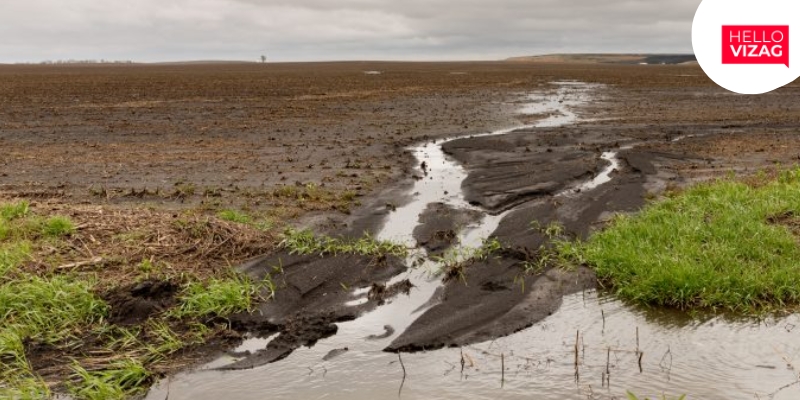Agricultural Practices Driving Water Pollution and Nitrate Crisis in Andhra Pradesh: Study Reveals Environmental Consequences
The success of the green revolution driven by intensive agricultural practices has led to the accumulation of a surplus of 14.75 crore kilograms of nitrogen and 20 crore kilograms of phosphorus annually, according to a recent study conducted by researchers from the Indian Institute of Technology, Gandhinagar, and the Helmholtz Centre for Environmental Research, Germany.
Despite the crucial role in meeting national food demand, regions like Andhra Pradesh are now grappling with the burden of nitrate contamination and the looming threat of a water pollution crisis.
The study combines this data with water balance analysis, painting a concerning picture for Andhra Pradesh, where surplus nutrient conversion adds to its graywater footprint.
To understand the environmental consequences for production hubs, the researchers mapped the fate of nitrogen and phosphorus in India’s interstate staple crop trade over the past decade.
The study reveals that the domestic wheat and rice trade over the past decade contributed to 51.4 crore kilograms of nitrous oxide (N₂O, a long-lived greenhouse gas) emissions at the producers' end in India.
Notably, four leading producers bear 73.1% of this annual N₂O emission load, totaling 4.28 crore kilograms.
These states include Haryana (28.3%), Punjab (20%), Chhattisgarh (12.4%), and Andhra Pradesh (12.3%).
The main exporting states have suffered an additional burden of 1,103 crore kilograms of nitrogen and 362 crore kilograms of phosphorus residues (legacy) in the soil in the past decade.
According to the research team, insufficient nutrient levels will diminish crop productivity, while excessive amounts can lead to severe environmental issues such as groundwater contamination, soil acidification, and the release of greenhouse gases into the atmosphere.
“In the entire agri-food chain, more than 80% of the nitrogen and phosphorus consumed ends up lost in the environment.
Given India’s role in global food security, identifying the nation’s environmental vulnerability can help in designing appropriate policy interventions for sustainable development,” the researchers emphasized.
The study evaluated the surplus of nutrients due to the cumulative trade of rice and wheat, with Punjab, Haryana, Chhattisgarh, and Andhra Pradesh as the main retainers.
Additionally, Tamil Nadu, Maharashtra, Uttar Pradesh, and Karnataka accounted for the introduction of 61 crore kilograms nitrogen per year and 20 crore kilograms of phosphorus nutrient load through interstate crop trading in producing states.
The study indicates a graywater equivalent of 378.8 billion cubic meters per year for nitrogen and phosphorus combined for these two major crops – rice and wheat.
The weight of this environmental impact predominantly falls on Haryana, Punjab, Chhattisgarh, and Andhra Pradesh, which collectively bear 73.2% of the total graywater footprint.

 Team Hello Vizag
Team Hello Vizag




















